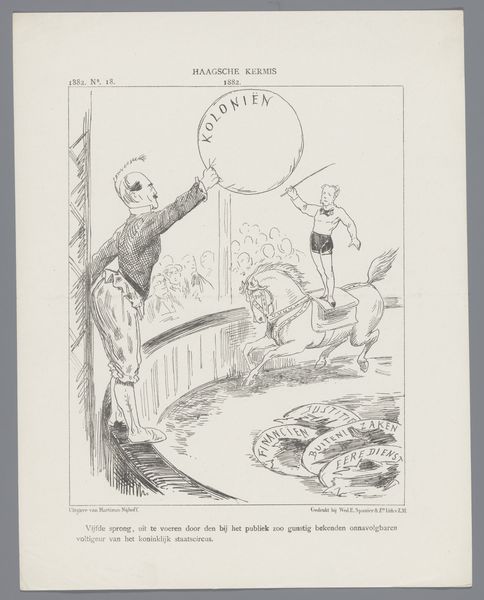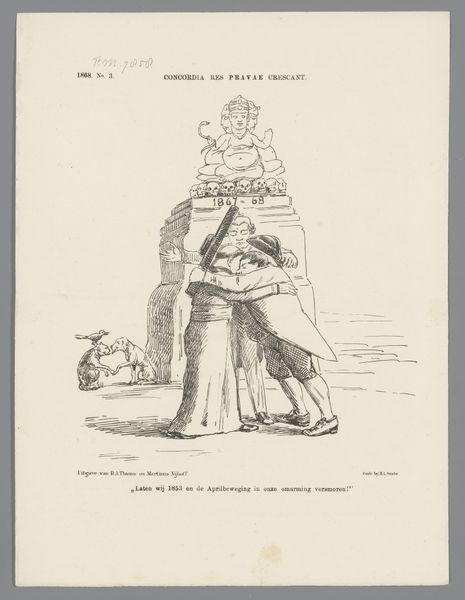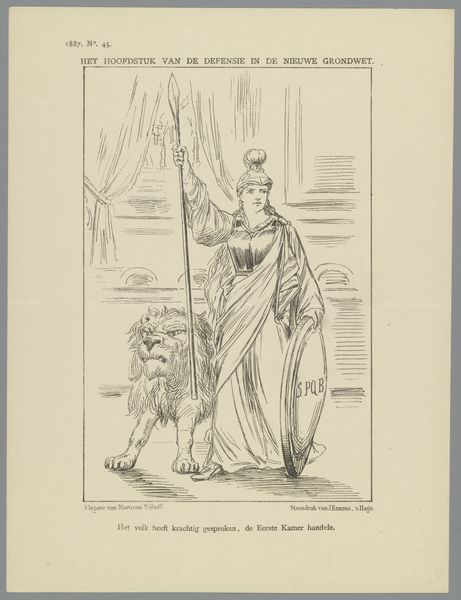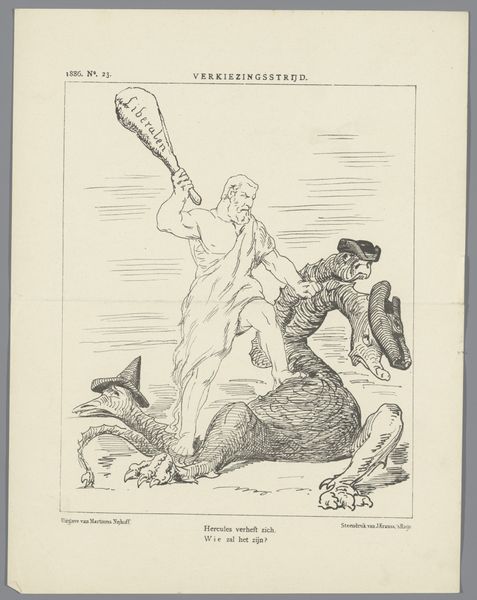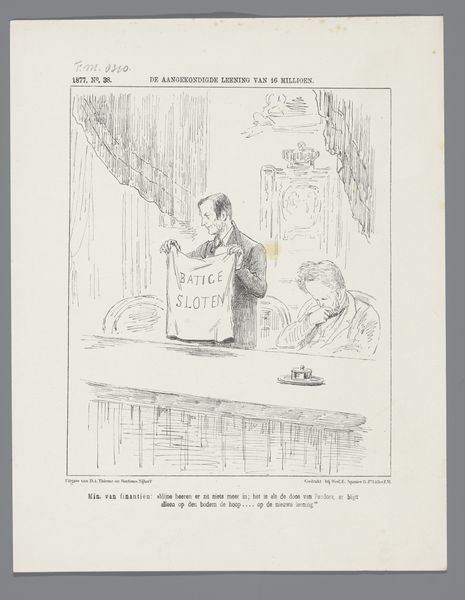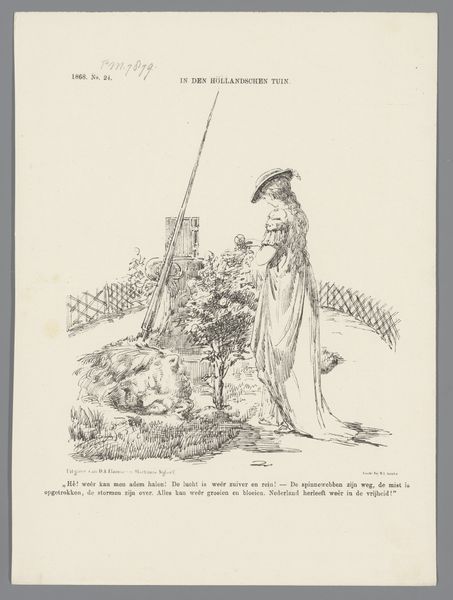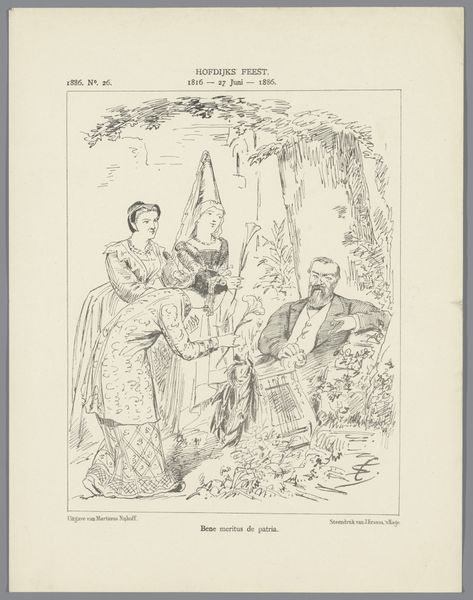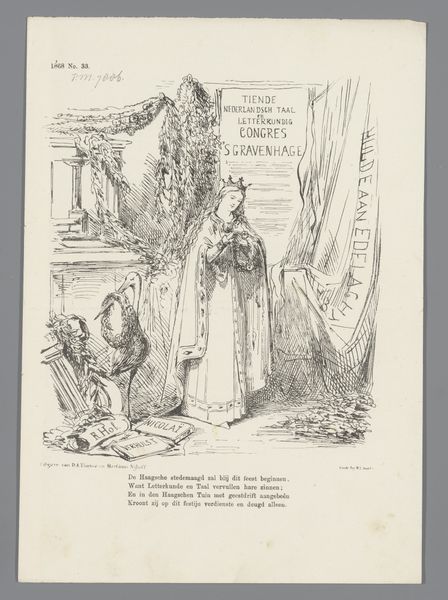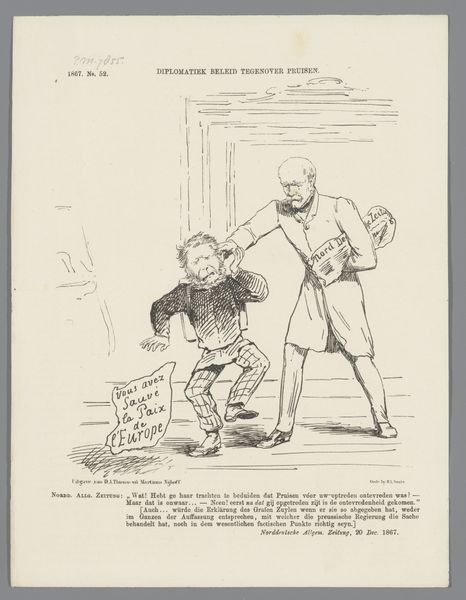
print, etching
#
narrative-art
# print
#
etching
#
caricature
#
symbolism
#
cityscape
#
realism
Dimensions: height 275 mm, width 215 mm
Copyright: Rijks Museum: Open Domain
Curator: The downcast mood practically jumps off the page. She looks like she is giving up. Editor: This etching, "Spotprent over de Staatsschool, 1885," roughly translates to “Cartoon about the State School." It's the work of Johan Michaël Schmidt Crans. The scene seems rife with symbolism. Curator: Yes, the dejected female figure draped in classical robes holds a model labeled “State School” – the shadow behind her suggesting some national history. Editor: Her posture is quite telling, isn’t it? Shoulders slumped, gaze downward… there’s a real sense of regret or loss. The Dutch Maiden seems ashamed about this "missed submission". What kind of school are we talking about? The image is full of hidden symbols! Curator: Well, public education in the Netherlands experienced a period of intense political debate in the late 19th century, primarily involving public versus religious education, perhaps she stands on a metaphorical wasteland from which a cityscape and sailing ships sit, and a national icon is relegated to the back like some unwanted animal. Editor: Note the empty hat on a stick, positioned like a beggar's tool, I sense that a formerly confident institution is now an object of public shame. Given the context you describe, it looks as if Schmidt Crans uses potent symbolism here to critique the state of Dutch public schools at the time. Curator: Indeed. The 1880s witnessed fierce debates surrounding the funding and direction of state schools. Artists frequently engaged in these social dialogues through prints and caricatures intended for broad circulation. Editor: It’s intriguing how the artist combines realism and caricature here. There's something deeply melancholic about the discarded history in the lion; while the school seems a monument that has yet to happen. I appreciate its ability to spark deeper questions about Dutch identity and societal values in a time of major ideological tension. Curator: Understanding the history enriches our viewing of this poignant symbolic artwork. Crans clearly captured the sentiments of a particular social perspective through vivid caricature. Editor: I am left thinking about cultural memory and public discourse. This print invites to consider how visual rhetoric shapes understanding the past and influences conversations today.
Comments
No comments
Be the first to comment and join the conversation on the ultimate creative platform.


